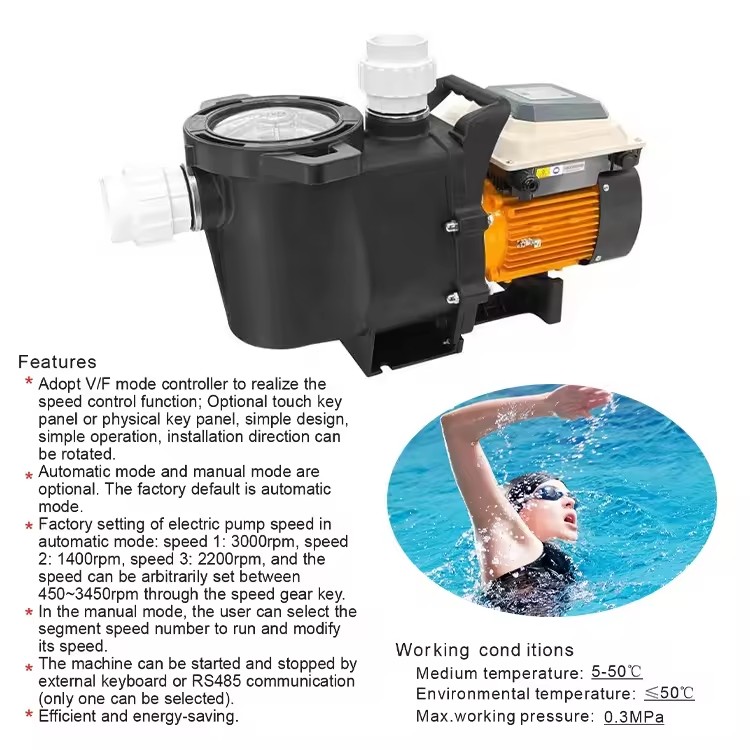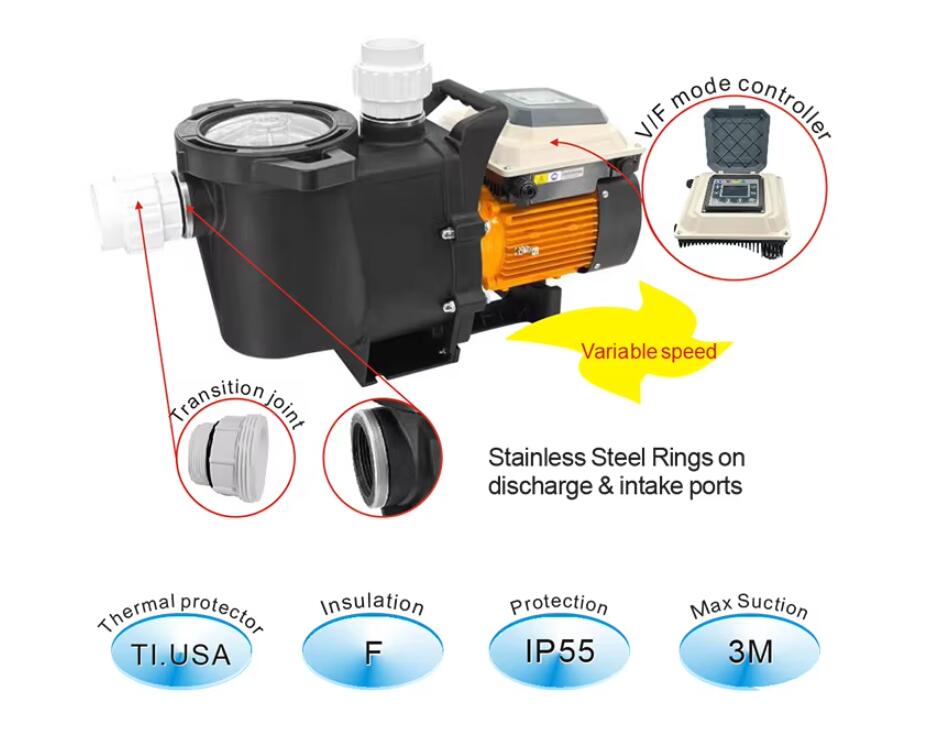
Selecting the right swimming pool pump is crucial for ensuring efficient water circulation, proper filtration, and overall pool health. Here are four key considerations to help you choose the best pool pump for your needs:
1. Pool Size and Volume
Understanding Your Pool's Needs
- Pool Volume: Calculate the total volume of your pool in gallons or liters. This helps determine the flow rate required to circulate all the water within a specific period, typically within 8 hours for optimal filtration.
- Turnover Rate: The turnover rate refers to the time it takes for the pump to circulate the entire volume of pool water. For residential pools, a turnover rate of 6-8 hours is ideal. Ensure the pump you choose can handle this within the desired timeframe.
2. Pump Type
Different Types of Pool Pumps
Single-Speed Pumps: These pumps operate at a fixed speed. They are less expensive initially but can be less energy-efficient and louder compared to other types.
Dual-Speed Pumps: These pumps offer a high and a low-speed setting. The low-speed setting is more energy-efficient and quieter, while the high-speed setting can be used for tasks that require more power, like vacuuming the pool.
Variable-Speed Pumps: These pumps allow you to adjust the speed to match the pool's needs, offering the highest energy efficiency and quietest operation. They are more expensive upfront but can save significant energy costs over time.

3. Energy Efficiency
Reducing Operational Costs
Energy Star Certification: Look for pumps that are Energy Star certified, as they are designed to be more energy-efficient.
Flow Rate and Power Consumption: Consider the pump’s flow rate (measured in gallons per minute or liters per minute) relative to its power consumption (measured in watts or horsepower). Higher efficiency pumps will provide adequate flow rates while consuming less power.
Timer and Automation Features: Pumps with built-in timers or compatibility with pool automation systems can help optimize run times, further reducing energy consumption.
4. Compatibility with Existing Systems
Ensuring Seamless Integration
- Plumbing and Electrical Compatibility: Verify that the new pump is compatible with your existing pool plumbing and electrical system. Check the pipe size, voltage, and amperage requirements.
- Filter Compatibility: Ensure the pump’s flow rate matches the capacity of your pool filter. An oversized pump can overpower the filter, reducing its effectiveness, while an undersized pump may not provide sufficient flow for proper filtration.
- Additional Features: Consider if the pump offers features that match your pool’s specific needs, such as compatibility with saltwater systems or heating elements.

Conclusion:
By carefully considering the size and volume of your pool, the type of pump, energy efficiency, and compatibility with existing systems, you can select fenlin pool pump that provides effective water circulation, reduces energy costs, and enhances the overall health and enjoyment of your swimming pool. Consulting with a pool professional can also provide valuable insights and recommendations tailored to your specific pool setup.


















